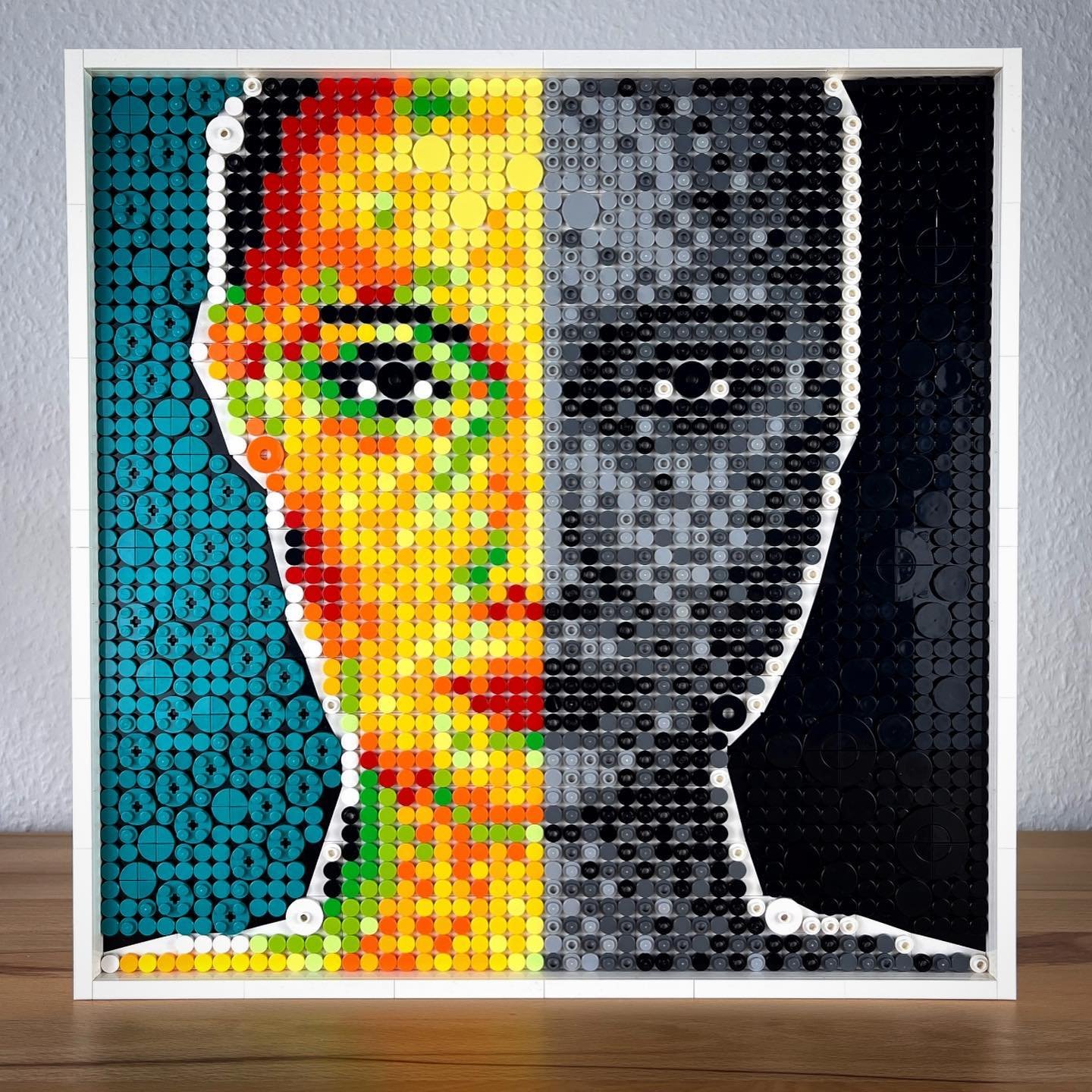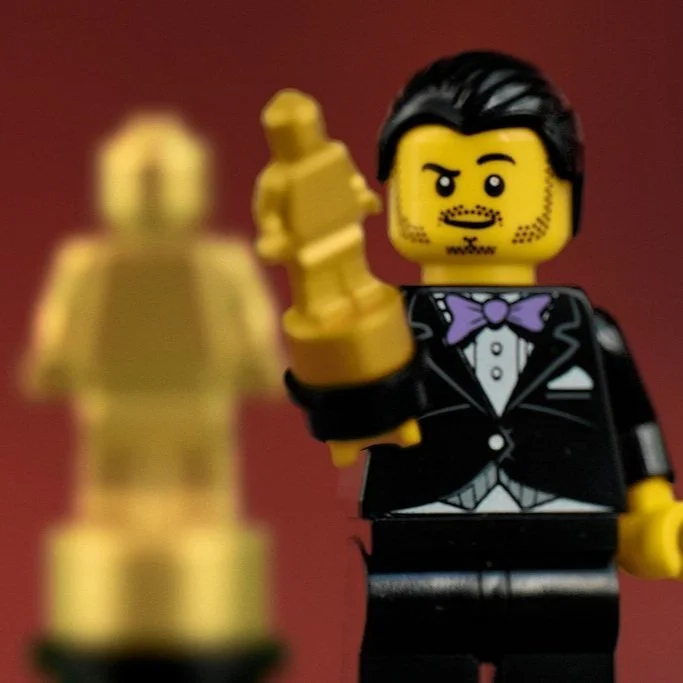Character, Color and Calendars: An Interview with Palixa And The Bricks
/Here at BrickNerd, we love to highlight the bright and imaginative works of talented builders across the LEGO community—and today’s feature is no exception to that. I had the pleasure of speaking with Katja (Palixa And The Bricks): a talented LEGO artist and a two-time finalist in BrickNerd’s own Nerdvember contests in 2016 and 2017.
Ann: Hi Katja! I’m very excited to discuss your work on BrickNerd! Please, tell us a bit about yourself. When did your interest in LEGO begin?
Katja: Hi Ann! And I am very excited to be interviewed by BrickNerd! I am a software engineer living in the south of Germany. Like many people, I came into contact with LEGO as a child. My mum bought me a few small sets, and I just loved playing with them and taking them apart to build new stuff. While LEGO sets definitely have changed since the early 90s, I still find this the best part of LEGO: being able to combine the bricks into something new and being creative in this somewhat structured environment while still allowing for almost endless possibilities.
Katja and her husband as Brickheadz
As an adult I found my way back to LEGO more or less by chance. If it weren’t for my husband, I’m not sure I would have considered LEGO as a hobby. A few years back he bought one of the smaller LEGO Millenium Falcons as kind of a showpiece to display at home and I jumped at the chance to build it. It was so much fun that I was hooked (as was my husband, albeit to a lesser degree).
Ann: Your builds have such eye-catching and wonderful use of colors! Do you decorate your home with your builds?
Katja: Why, thank you! I just love to work with colors and try to experiment with different color schemes and color combinations to create different moods.
Some of the creations I've built are actually used as decorations in our apartment. For instance the table lamp with the swappable panels to accommodate for seasonal events like Halloween or Christmas.




Others occasionally find their place as wall decorations or on various shelves. I like to keep it reasonable though, and not overdo it. Most of my builds will be displayed for some time and then dismantled later as I need space or bricks for new projects.
Ann: You have a very colorful gallery of brick-built characters! What was the process behind designing these builds like?
Katja: Well, for the ones that are based on characters from films or TV shows, like Sully from Monster’s Inc or the sheep from the series “Shaun the Sheep,” it’s all down to the original character models and the ingenuity of their creators, right?




Building the characters from LEGO bricks definitely was a challenge, specifically when trying to capture the essence of every character and translating it into LEGO. Whenever I attempt to build characters like these, a lot of practical trial and error with actual bricks is involved, trying different things and going back and forth between different implementations.



I also built characters out of my imagination, like the Extraterrestrial Punk Chicken or, more recently, the Diver or the Summer Fruits. Some of them started as an experiment. For the Space Chicken, I wanted to try out some Bionicle pieces, and the Diver was an exercise in color theory.
But for all of them, their pose and their facial expression are important. They tell a story without any words and therefore help to draw the viewer in and build a connection.
Ann: You have also created your own Advent Calendars. How many exclusive calendars do you have in your collection? Do you use them during the winter holidays?
Katja: As my husband and I started establishing our very own holiday traditions, getting advent calendars was part of it. You know, the usual stuff: ones filled with chocolates and other sweets, off-the-shelf LEGO advent calendars, that sort of thing. We also started building some of the LEGO Winter Village sets together to create a festive display each year.
So, the first advent calendar that started it all was not a functional calendar but rather an expansion of the LEGO Winter Village theme.
There’s this tradition in several towns in Germany to turn the town hall into huge advent calendars during December. Each day a window will be opened and either a child gets a present or a story will be read. I tried to recreate this and built a town hall with windows as advent calendar doors.
The first functional calendar was a display of the north pole with Santa’s log cabin on top and doors hidden on each side of a snowy mountain. The numbers were brick-built and behind each door was a bag with bricks for a small mini build each day: 24 different sweets.
The last advent calendar so far was a huge snowman. The doors were placed in his belly and his back. Again, there were small bags with bricks behind each door, but this time they resulted in a bigger display for Christmas: Santa, his sleigh, some gifts and one of his reindeers.
Ann: Modular building MOCs make up a large part of your work as a builder. How did you come to develop these builds? What modular building is your favorite?
Katja: Modular buildings were my main starting point when I got back into LEGO. At first with some of the official LEGO modular buildings, like the Palace Cinema or Town Hall, but soon I started to build my own modulars. I mostly try to base them on real-life buildings or architectural features of real-life buildings, but they are never an exact replica or scale model. Some modulars are inspired by buildings in my hometown— like the Main Post Office—and some are inspired by buildings that I’ve seen while traveling or being on vacation. That's how the Canal Houses came into being.
They started with the black building which is based on an actual building in Amsterdam. I tried to recreate the real-life bricks by using 1x2 and 1x1 plates and really liked the effect. So, I built another house with the same technique, but this time with a storefront. By then, I was on a roll and added two more canal houses, two canal boats, and the canal itself.
All of my modular buildings have detailed interiors. For me, that’s just as important as the façade and it often takes more time to design a floor plan and build furniture than building the exterior. Most of them contain some kind of shop and at least one apartment.
It might sound silly but I always try to imagine that the minifigures actually live in these buildings, so I would have to provide them with all kinds of amenities: nice and comfy furniture, a fully equipped kitchen, bathrooms, etc. Also, there are always some plants and lots of books. Even the canal boats for the Amsterdam canal houses are fully furnished and both have a bathroom.
My most complicated building so far is the windmill. It’s loosely based on windmills in the Netherlands and northern Germany, and, of course, also built in the modular style with interiors on two levels: a pottery workshop on the ground floor and an apartment upstairs.



It was a huge challenge to get the shape right while also making it somewhat functional (the cap and the windmill blades are rotating).
Ann: What does the LEGO hobby mean to you?
Katja: For me, building with LEGO is a way of winding down after a stressful day. I consider this to be 'my' thing—as in my own personal activity where I can express myself without others interfering, not even my husband. I do occasionally ask him for advice and we did some great builds together (like the Futurama BrickHeadz) but overall, LEGO is my world where I can basically do whatever I want.


I especially enjoy the combination of art and math with LEGO. Sometimes it’s like solving a puzzle, when you try to figure out different building directions and angles. Other times it feels like painting or sculpting. All of it is so satisfying to me and brings me lots of joy. If I’m able to convey these feelings to the viewer that’s even better.
LEGO is also a great tool for me to process thoughts and feelings.
This portrait, for example, addresses mental health and depression, how your perception and your feelings can change and also how you can look fine on the outside but are secretly falling apart on the inside.


Lastly, LEGO is a great way to meet and connect with other people. There are so many talented, kind and welcoming human beings in the community! I especially like to take part in challenges like MosaicsOnMondays (@MosaicsOnMonday), the Habitat Challenges (@HabitatChallenge) or the LetsBuildSeries (@LetsBuildSeries), all of them on Instagram. They are open for everyone regardless of their building experience or skill, there is no competition for the best entry and they are so much fun because of everyone’s positivity and kindness.
Ann: Are you working on any LEGO creations at the moment?
Katja: Sure, I’m almost always working on something new. I won’t tell you what it is, though!
Joking aside, I don’t like to talk about my builds before they are finished. Sometimes a build doesn’t quite work out like I envisioned it. Sometimes I have too many ideas and not enough time. Sometimes a build will never be finished. Sometimes an idea evolves into something completely different. But that’s all part of the creative process and that’s what makes it interesting and fun, doesn’t it?
Ann: What is your favorite LEGO theme? Favorite sets?
Katja: LEGO is putting so much stuff out, it’s really hard to keep track of everything!
My favorite theme for a long time was modular buildings. As a kid I always wanted to build dream houses but there weren’t many sets with buildings or even basic bricks to build houses. The modular series directly spoke to the child in me. I especially loved the earlier modulars because they had beautiful exteriors while the interior was somewhat unfinished which sparked my imagination. For some of them I built my own version as they were too expensive by the time I got back into LEGO.
I stopped collecting them after the American Diner, mainly because I ran out of space but also because they were a little too perfect. There was not much left for me to do after I had built them.
Of all the things LEGO released in recent years I like the flower sets the most. They are so beautiful and colorful, and you don’t need green fingers for them to grow.
Ann: Thank you very much for this wonderful interview, Katja! It's been a pleasure to discuss LEGO art with such a talented builder! We can't wait to see your new creations!
Best of BrickNerd - Article originally published October 8, 2024.
What characters would you like Katja to build next? Let us know in the comments.
Do you want to help BrickNerd continue publishing articles like this one? Become a top patron like Charlie Stephens, Marc & Liz Puleo, Paige Mueller, Rob Klingberg from Brickstuff, John & Joshua Hanlon from Beyond the Brick, Megan Lum, Andy Price, Lukas Kurth from StoneWars, Wayne Tyler, LeAnna Taylor, Monica Innis, Dan Church, and Roxanne Baxter to show your support, get early access, exclusive swag and more.


















































